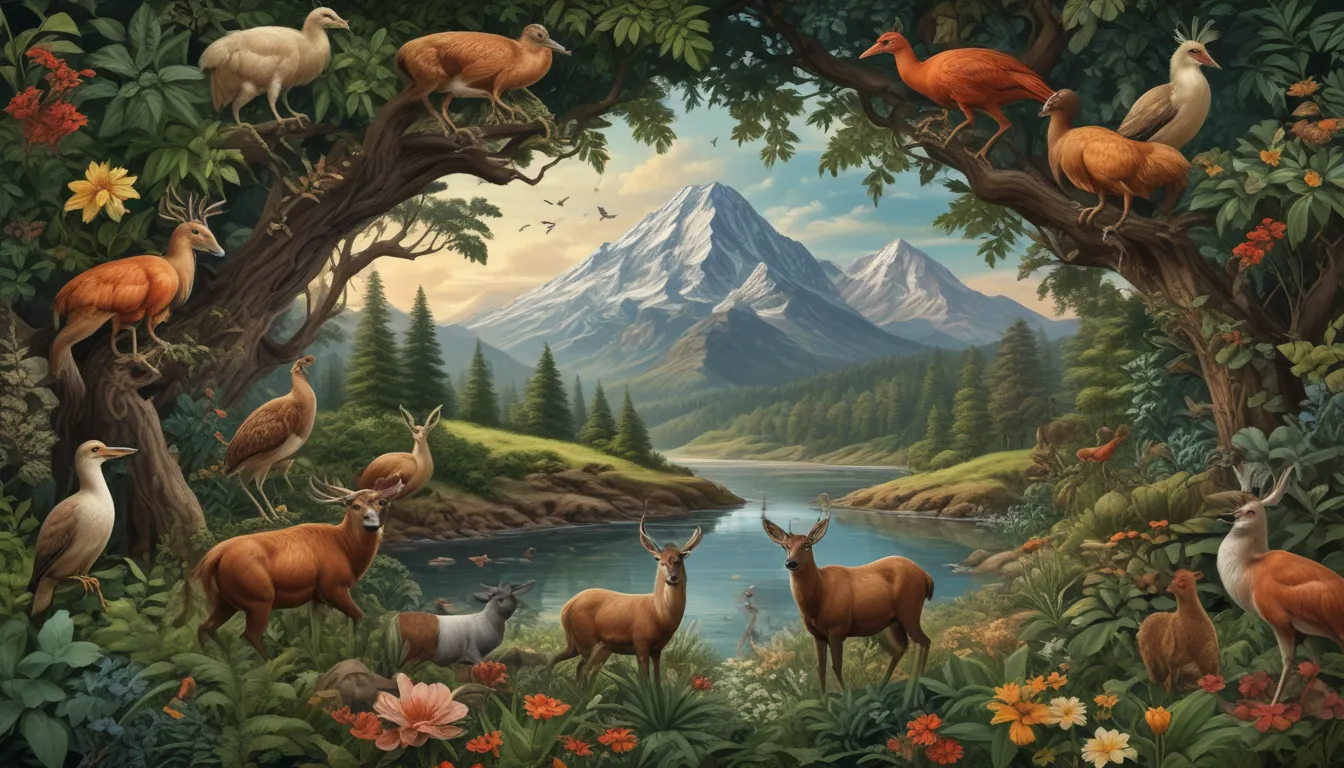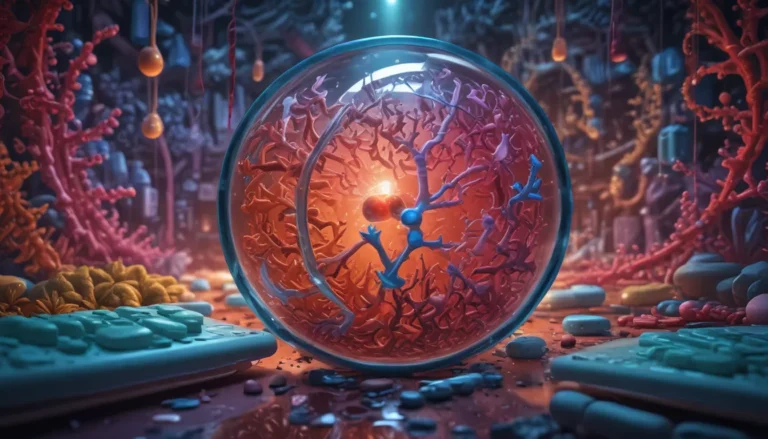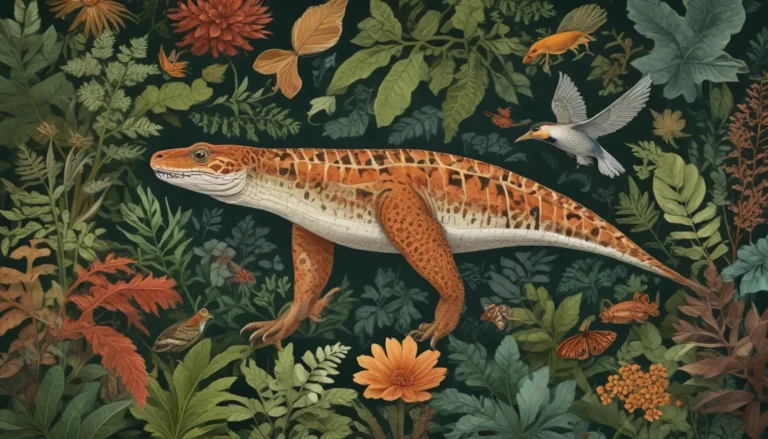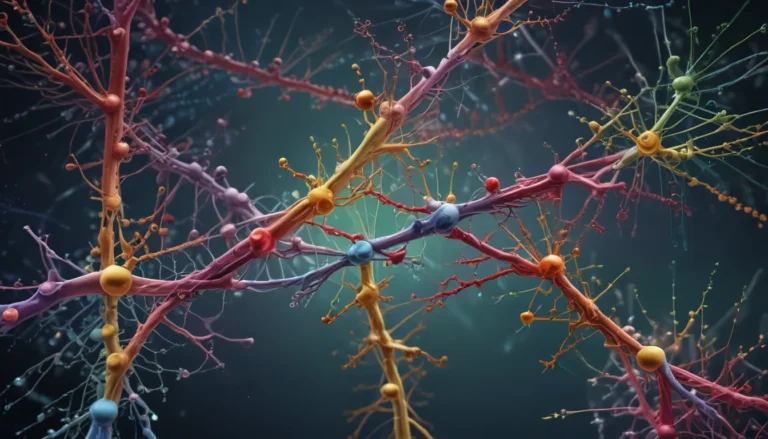A Note About Images: The images used in our articles are for illustration purposes only and may not exactly match the content. They are meant to engage readers, but the text should be relied upon for accurate information.
In the intricate web of ecosystems, pioneer species stand out as nature’s superheroes, paving the way for life to thrive in harsh and challenging environments. Their resilience, adaptability, and unique characteristics make them a subject of intrigue for scientists and nature enthusiasts alike. From their role in ecological succession to their remarkable adaptations, pioneer species play a crucial role in shaping the world around us. Let’s explore 11 fascinating facts about these resilient organisms and uncover the mysteries of their incredible journey.
The Pioneers of New Beginnings
Pioneer species, also known as primary colonizers, are the first to colonize disturbed or barren habitats. Whether it’s a landscape ravaged by natural disasters or human activities, these remarkable organisms have the ability to establish themselves in challenging environments. Their resilience and adaptability make them essential in the process of ecological succession, where they pave the way for the development and recovery of ecosystems.
The Architects of Ecosystems
By creating favorable conditions for other plants and organisms to thrive, pioneer species play a crucial role in ecosystem development and recovery. They stabilize soil, aid in nutrient cycling, attract pollinators, and promote the establishment of a diverse and balanced ecosystem. As they gradually transform barren landscapes into hospitable habitats, they create niches and opportunities for other species to thrive, leading to a surge in biodiversity.
Specialized Traits for Survival
Pioneer species exhibit specialized traits that enable them to thrive in harsh environments. These remarkable adaptations include rapid growth, efficient dispersal mechanisms, nitrogen fixation, tolerance to extreme temperatures, and resistance to drought and high salinity. These traits allow pioneer species to withstand the challenges of their surroundings and create conditions for other species to flourish.
The Diverse World of Pioneers
While plants like lichens, mosses, and grasses are commonly recognized as pioneer species, certain animals can also fulfill this role. Animals such as burrowing species like prairie dogs contribute to creating suitable conditions for vegetation growth by loosening and fertilizing the soil. The diversity of pioneer species adds to the complexity and richness of ecosystems.
Resilience Over Time
Some pioneer species have short lifespans and eventually give way to more competitive species, while others, known as persistent pioneers, can endure and coexist with other plants for extended periods. These persistent pioneers continue to contribute to the ecosystem by providing resources and shelter for other organisms, creating a harmonious balance in the ecosystem.
Adaptability in Changing Environments
Pioneer species demonstrate a remarkable ability to adapt to changing environmental conditions. In response to disturbances such as fires or floods, they regenerate and recolonize affected areas, facilitating the recovery and restoration of ecosystems. Their adaptability ensures their survival in dynamic and ever-changing environments.
Economic Value of Pioneers
Certain pioneer plants have economic significance, especially in land reclamation efforts. Grasses used for stabilizing soil, preventing erosion, and restoring damaged lands are invaluable in rehabilitation projects following mining activities, construction, or natural disasters. Pioneer species play a vital role in restoring and rejuvenating degraded landscapes.
Urban Greening and Restoration
In urban environments, pioneer species play a crucial role in urban greening initiatives, roadside plantings, and urban forest restoration projects. Their ability to establish quickly and thrive in harsh conditions makes them invaluable in creating more sustainable and resilient cities. Pioneer species contribute to the greening of urban spaces and the creation of healthy environments for both humans and wildlife.
Environmental Health Indicators
The presence and abundance of pioneer species can serve as indicators of environmental health and quality. Monitoring these species can help scientists and ecologists assess the state of an ecosystem. A diverse community of pioneers often signifies a healthy and recovering habitat, while the absence of pioneers may indicate ecological degradation that requires attention and conservation efforts.
Model Organisms for Research
Pioneer species serve as model organisms for scientific research due to their rapid growth, adaptability, and ability to thrive in challenging environments. Scientists use them to study plant succession, colonization patterns, and ecological impacts of disturbances, providing valuable insights into ecosystem dynamics and resilience. By studying pioneer species, researchers gain a deeper understanding of how ecosystems function and respond to environmental changes.
Conclusion: Embracing the Journey of Pioneer Species
In conclusion, pioneer species play a vital role in ecological succession and ecosystem development. Their resilience, adaptability, and unique traits contribute to the creation of diverse and balanced habitats. From their ability to withstand harsh conditions to their role in initiating ecological succession, pioneer species continue to captivate and inspire. By appreciating their fascinating characteristics and ecological significance, we gain a deeper understanding of the intricate web of life on our planet.
Was this exploration of pioneer species informative and engaging? Join us as we unravel the mysteries of nature and learn from the resilience of pioneer species. Our dedication to delivering trustworthy and captivating content ensures a rewarding and enriching experience for all curious minds.
FAQs
-
What are pioneer species?
Pioneer species are the first plant or animal species to colonize previously barren or disturbed areas, initiating ecological succession. -
Why are pioneer species important?
Pioneer species enhance soil fertility, prevent erosion, and create conditions for other species to establish in new ecosystems. -
How do pioneer species tolerate harsh conditions?
Pioneer species have specific adaptations that enable them to withstand extreme temperatures, limited resources, and poor soil conditions, such as deep root systems and rapid growth. -
How do pioneer species disperse to new areas?
Pioneer species disperse through various mechanisms, including wind dispersal of seeds, water dispersal, and interactions with animals that aid in seed dispersal. -
Can pioneer species exist in established ecosystems?
While pioneer species are typically found in disturbed areas, they can also exist in established ecosystems if periodic disturbances create open spaces for colonization. -
Can pioneer species be used for ecological restoration?
Yes, pioneer species are often used in ecological restoration efforts to kick-start succession and restore degraded ecosystems. -
Are all pioneer species plants?
While most pioneer species are plants, there are also pioneer animal species that play a crucial role in initiating ecological succession. -
How long do pioneer species remain in an ecosystem?
The presence of pioneer species in an ecosystem varies depending on factors like competition, environmental conditions, and the arrival of other species, persisting for varying durations. -
Can pioneer species be invasive?
Some pioneer species can become invasive, outcompeting native species and disrupting ecosystem balance. Careful assessment and management are crucial to prevent negative impacts. -
Do pioneer species contribute to biodiversity?
Yes, pioneer species contribute to biodiversity by creating habitats that support other species, promoting diverse ecosystems. -
Can pioneer species adapt to changing environments?
Pioneer species show a remarkable ability to adapt to changing environmental conditions, thriving in diverse ecosystems with varying challenges.
Embark on a journey of discovery with pioneer species, the trailblazers of ecosystems, as they inspire and transform the world around us. Explore the wonders of nature and gain a deeper appreciation for the resilience and adaptability of life on our planet.






